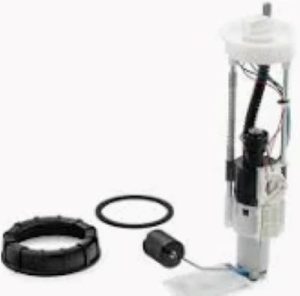Excessive current draw from a Fuel Pump is usually an indication of internal wear or electrical resistance and blockages of the fuel system. Recognizing this problem at an early stage saves the pump, wiring and vehicle´s electrical system from further damage. Most fuel pumps draw 4-10 amps (again this varies by vehicle) when operating correctly. If the amperage is outside of this range, it adds stress on the electrical system and indicates possible pump failure.
The first step to measuring the power draw of a pump is using a multimeter or an amp clamp. Connect to the pump electrical circuit with engine running. If the amp reading exceeds the specification outlined by the pump manufacturer, the pump is likely experiencing excessive internal friction or motor wear. Clogged fuel filters typically increase system load, as the pump must push harder to deliver the same amount of fuel. Think about spending $20-$50 on a replacement filter to fix the problem and keep your pump from working overtime.
One more indication of a pump drawing too much power is heat. A hot pump feels hot on touch and may potentially end its life too soon. Also, AAA reports that saturated pumps under too much electrical load tend to overheat 30 percent more quickly than those operating within normal parameters. This problem, which leads to Clogged Pipes, is prevented by regularly checking the pump and its surrounding components.

Pump circuit voltage drops are another symptom of a deeper issue. In a working circuit, the pump should receive a steady 12 volts. Using your multimeter to double check that you have proper voltage at the power and ground terminals. If your readings drop significantly (such as below 11 volts) then you may have a corroded connect, frayed wire or bad relay. By taking care of these problems quickly, you can avoid damaging the pump and electrical system.
There are real-world case studies that show how crucial it is to diagnose excessive power draw. A Texas repair shop has a 2017 Chevrolet Malibu that kept stalling about every 30 seconds or so. The problem turned out to be a clogged fuel line which made the fuel pump draw 15 amps when it was only rated for 10A—50% over max output. The line and pump were replaced, and the vehicle functioned as expected, reiterating the need for a regular system maintenance schedule.
Taking preventive measures such as regular maintenance inspections and line replacements will make sure that the pump works optimally. Purchasing a premium Fuel Pump avoids power drawn problems and increases the durability of the system. The replacement of the fuel filters, testing for electrical resistance or loss and continually monitoring the amperage goes a long way in minimizing unexpected breakdowns while also reducing future repair costs.